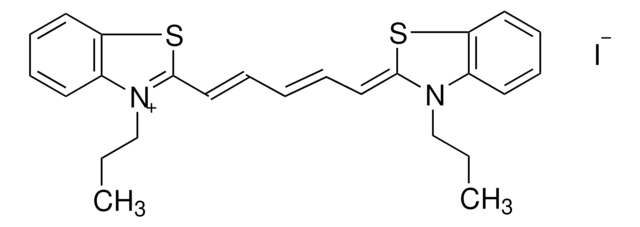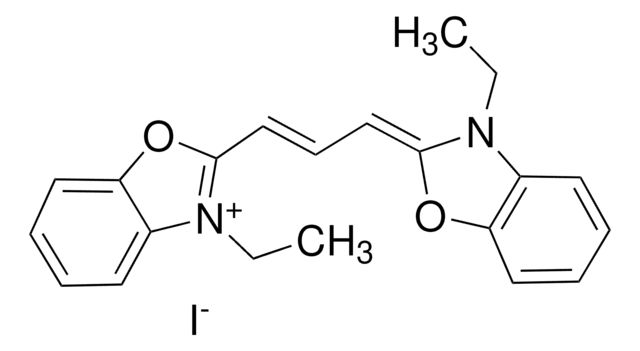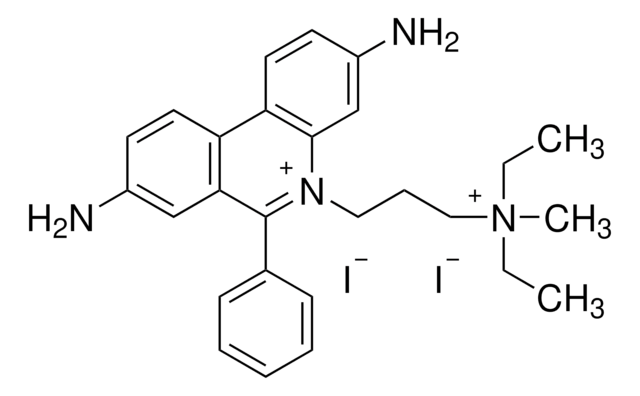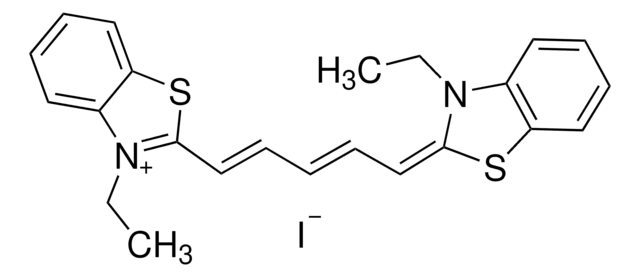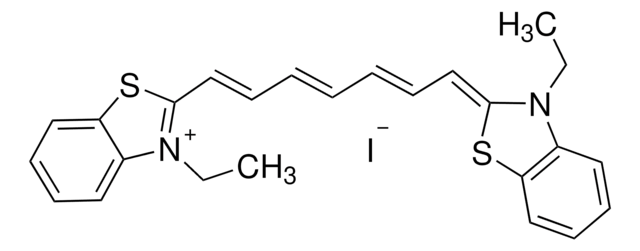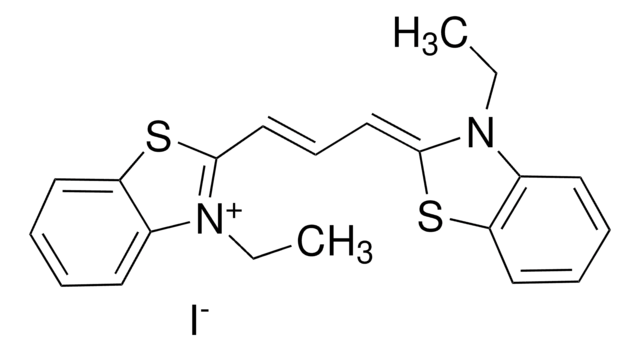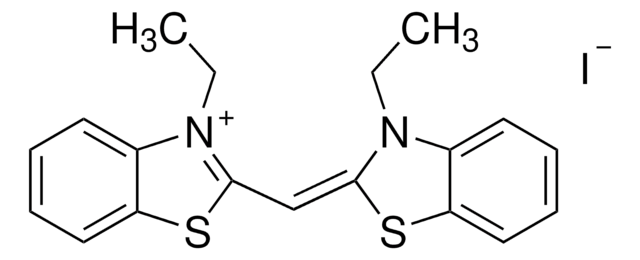318434
3,3′-Dipropylthiacarbocyanine iodide
98%
Synonym(s):
3-Propyl-2-[3-[3-propyl-2(3H)benzothiazolylidene]-1-propenyl]benzothiazolium iodide, DiSC3(3)
About This Item
Recommended Products
Assay
98%
form
crystalline powder
mp
288 °C (dec.) (lit.)
solubility
chloroform/methanol: 10 mg/mL, clear
λmax
559 nm
ε (extinction coefficient)
163120 at 599 nm in methanol at 0.00463 g/L
17425 at 298 nm in methanol at 0.00463 g/L
40246 at 220 nm in methanol at 0.00463 g/L
fluorescence
λex 559 nm; λem 575 nm in methanol
application(s)
diagnostic assay manufacturing
hematology
histology
storage temp.
room temp
SMILES string
[I-].CCCN1C(\Sc2ccccc12)=C\C=C\c3sc4ccccc4[n+]3CCC
InChI
1S/C23H25N2S2.HI/c1-3-16-24-18-10-5-7-12-20(18)26-22(24)14-9-15-23-25(17-4-2)19-11-6-8-13-21(19)27-23;/h5-15H,3-4,16-17H2,1-2H3;1H/q+1;/p-1
InChI key
JGTCEHAVVINOPG-UHFFFAOYSA-M
Looking for similar products? Visit Product Comparison Guide
General description
Application
Biochem/physiol Actions
Signal Word
Warning
Hazard Statements
Precautionary Statements
Hazard Classifications
Eye Irrit. 2 - Skin Irrit. 2 - STOT SE 3
Target Organs
Respiratory system
Storage Class Code
11 - Combustible Solids
WGK
WGK 3
Flash Point(F)
Not applicable
Flash Point(C)
Not applicable
Personal Protective Equipment
Choose from one of the most recent versions:
Certificates of Analysis (COA)
Don't see the Right Version?
If you require a particular version, you can look up a specific certificate by the Lot or Batch number.
Already Own This Product?
Find documentation for the products that you have recently purchased in the Document Library.
Articles
Nitric oxide (NO) as a signal transporter in neurons, endothelial cells and in the immune system.
Our team of scientists has experience in all areas of research including Life Science, Material Science, Chemical Synthesis, Chromatography, Analytical and many others.
Contact Technical Service